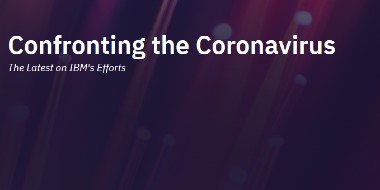Health & Wellness
When Working Remotely Creates Anxiety, Remote Resources Can Help Our Workers
March 26, 2020 | Written by: Dr. Lydia Campbell
Categorized: COVID-19 | Health & Wellness
Share this post:
 Even in the best of times, more than 10 percent of the world’s population suffers from illnesses like anxiety and depression.
Even in the best of times, more than 10 percent of the world’s population suffers from illnesses like anxiety and depression.
Now, because of the coronavirus pandemic, we may be in the worst of times for mental health. A new U.S. public poll by Axios/Ipsos found that adults surveyed reported worsening mental and emotional health in the past week.
Millions worry about economic and job insecurity, and that’s a huge stressor. Retired people are watching a lifetime of savings disappear. Teenagers are housebound, without the usual access to their peers.
People fortunate enough to have jobs that enable them to work from home must nonetheless balance the pressures of keeping their families healthy and their work lives productive. An elderly parent might be quarantined in a nursing home, facing illness. A spouse might be watching her successful business disintegrate. Or maybe the employee lives alone and is feeling intense isolation.
Even people who have always thought of themselves as balanced might find the stress too much to take. Those who have been diagnosed with acute anxiety or other mental health problems are likely to be suddenly cut off from their therapists and other usual support systems.
That’s why employers need now more than ever to provide support—and to recognize that in the same way digital technology can help keep people on the job, it can also contribute to their mental well-being.
The nature of the work environment is a major factor affecting mental health, according to a recent study by the IBM Institute for Business Value, and that’s something we can influence, even at a digital distance. We need to engage, if—for now—only virtually.
Helping Our Colleagues Cope
It’s easy to offer assistance to people who talk about having a problem, but many do not. We should never assume that people will seek help when they need it. Sometimes they are ashamed, and sometimes, they might just not know what is happening to them.
For instance, they might not realize when they are having a panic attack or entering a depressive episode because they’ve never had those experiences before. Some people feel ashamed to ask for help, so it’s important to inform the entire workforce of digital resources available to them. That way, anyone who needs help can benefit without having to reveal to a manager that they are struggling.
At our company, IBM, with more than 350,000 employees around the world—many of whom are working from home—we have taken steps that include providing online educational resources like resilience training, mindfulness communities and confidential support programs such as virtual or telephone counseling. In many countries, we have enabled telemedicine apps and virtual appointments with the employees’ physicians.
We know that’s only a beginning, which is why we encourage the business community to share ideas and resources for helping our most vital assets—our colleagues—cope with this unprecedented global predicament.
Choosing the Right Tools
Websites and apps abound for those who want to research physical symptoms like a rash, fever or joint pain. But for individuals seeking to identify or understand potential mental health symptoms or conditions, getting to the right information is more challenging.
We can share trusted information with our employees so they know about the best resources.
 Not all mental health treatment is overtly medical. Some of it revolves around lifestyle, like helping people learn how to meditate, how to exercise at home or how to cook healthfully. IBM, for example, offers its U.S. employees an app-based program called meQuilibrium that encourages different ways to develop healthy habits that can help build mental and emotional resilience.
Not all mental health treatment is overtly medical. Some of it revolves around lifestyle, like helping people learn how to meditate, how to exercise at home or how to cook healthfully. IBM, for example, offers its U.S. employees an app-based program called meQuilibrium that encourages different ways to develop healthy habits that can help build mental and emotional resilience.
The last few years have seen the beginning of digital help for mental illness. Down the line, we can expect to see personalized mental health management—using data collected from multiple sources to create customized treatments for patients. With prior permission from patients, data can be culled from various digital sources and used to assess their behavioral and emotional states. Non-identifiable data in aggregate form can also be used to detect patterns and identify general needs across groups of people.
The global social psychological challenges posed by COVID-19 may force employers to begin adopting such tools and techniques sooner than we could have expected just a few months ago.
Related:
Dr. Lydia Campbell is chief medical officer for IBM Corporate Health and Safety and co-author of the study “How Technology and Data Can Improve Access to Mental Health Resources

Chief Medical Officer, IBM Corporate Health & Safety
Shifts in U.S. Consumers’ Preferences Amid COVID-19 Make Business Agility Essential
As we move through the pandemic, and states and businesses in the United States begin to carefully re-open, U.S. consumers’ attitudes toward life and work are continuing to evolve, according to new research from the IBM Institute for Business Value (IBV). The IBV polled more than 18,000 U.S. adults in May and early June to […]
Igniting the Dynamic Workforce in Your Company
In the rapid push to moving to remote work, we’ve seen digital strategies accelerate by years – transforming their workplaces, workstyles, and business processes forever. Overnight, remote workforces put advanced environments of multi-device mobility, dynamic connection points and robust cloud-based apps that ease communication and collaboration. A new normal is emerging, led by the companies aggressively adopting cloud […]
Lessons from Space May Help Care for Those Living Through Social Isolation on Earth
Since the Crew Dragon spacecraft arrived at the International Space Station (ISS) on May 31, NASA astronauts Bob Behnken and Doug Hurley have been busy—according to their Twitter posts, even working over the weekend to repair the ISS treadmill. They likely don’t have much time to think about being lonely and cut off from life […]


